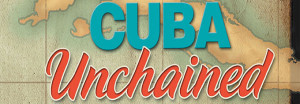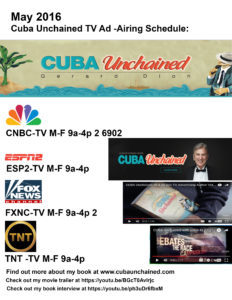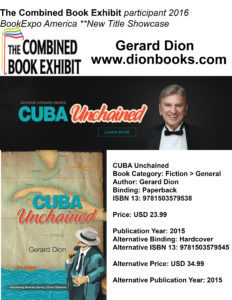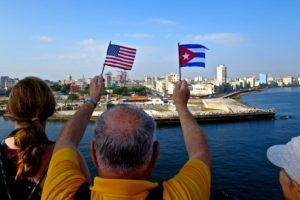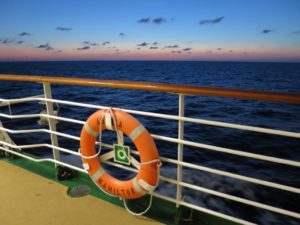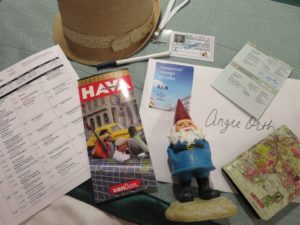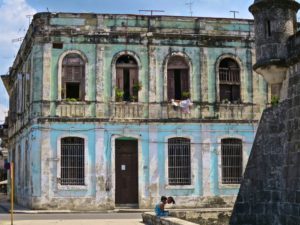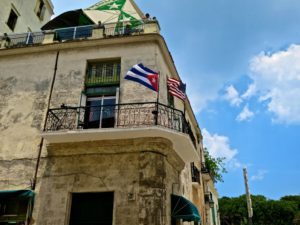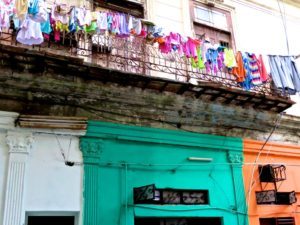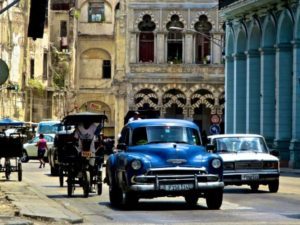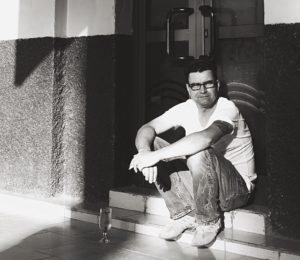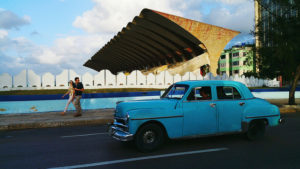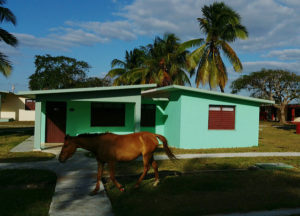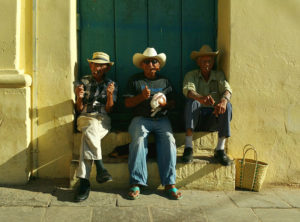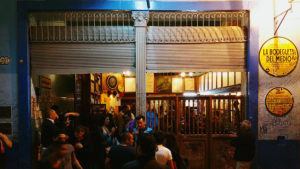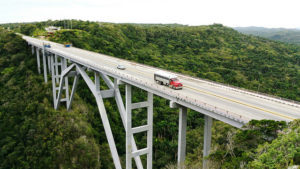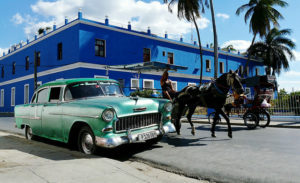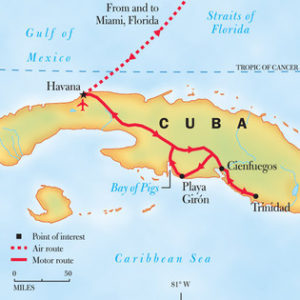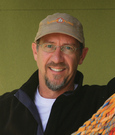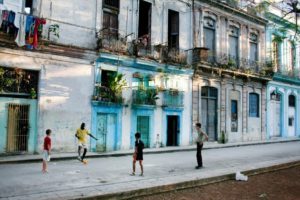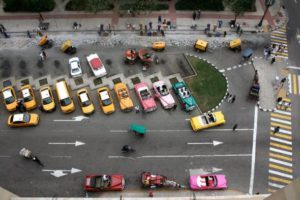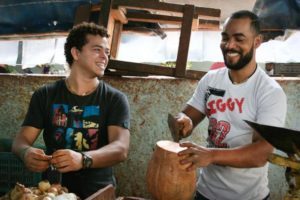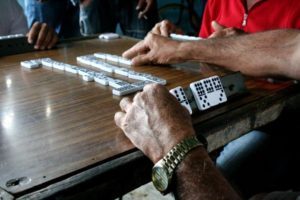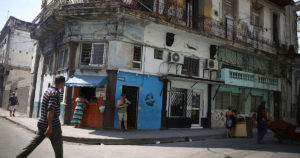Gerard Dion's Blog, page 19
June 7, 2016
SAN DIEGO MYSTERY CLUB- MAY 2016
JEAN’S JOTS
GERARD DION, our guest author for the June 9th meeting, is a U.S. Marine Corps veteran as is his protagonist, Nickolas Harvey in CUBA UNCHAINED. Both Mr. Dion and the fictional Mr. Harvey also share being business executives who are dedicated to the cause of U.S./Cuba diplomatic and political reconciliation.
In this debut novel, Mr. Harvey has formed a group, Americans for Reconciliation with Cuba. His involvement with the cause leads to political thriller intrigue such as possible assassination plots, political double-crosses and a great deal of all- around tension.
We shall hope to learn just how much of Mr. Dion is in Mr. Harvey when the author introduces himself to us and we to him. We will learn just how and why Mr. Dion became so dedicated to the Cuban cause and what his expectations are now that the reconciliation process seems to be taking place. Just how has he, a self-employed auto industry marketing executive, found himself a step ahead of very recent headline news. Is it all about the cars?
We will get the answer to this question and most likely many others at our next meeting.
May 28, 2016
TV Ad Pre-Airing Schedule
Book Expo America Exhibit 2016
May 24, 2016
Dion Books
First Impressions from Cuba
Dion Publishing Proudly presents the following article.
First Impressions from Cuba By Angie Away
For the first time in a million miles, I found myself with more questions than answers at the end of a trip. Usually my on-the-ground research is enough to form a solidly positive or negative opinion about a new place, but not in Cuba. I was utterly confounded from Havana in the northwest to Santiago de Cuba in the southeast.
An example of my inner tumult: I snapped hundreds of photos of crumbling edifices while thinking how beautiful and poetic it was, only to be jolted by the reality of the “beauty.” It’s crumbling and decrepit because no one can afford to care for it. Most Cubans only make $20 a month regardless of occupation, so building upkeep literally can’t be a priority.
It’s been a while since I’ve visited such a complex place. In other countries with political complications, there hasn’t been the same natural allure. Growing up in Florida, surrounded by both the remnants of Spanish colonialism and plenty of natural-born Cubans and their hyphenated descendants, I had a built-in connection that I never had with the slums in Kenya or barrios in Bolivia. Still, nothing quite prepared me for the internal struggle to capture Cuba realistically, respecting the pain of a revolutionary past and the hope of a better future.
It’s the most complicated country I’ve ever visited
No sooner would I conclude that Cuba was definitely A, B & C, then I’d see something or learn something from our Cuban guide that would make me think perhaps it was really X, Y & Z. The reality of Cuba is that it’s a land of juxtaposition, and there aren’t a whole lot of concrete answers.
It’s tragically beautiful
Because of its forbidden status, many Americans imagine a romantic, glamorous Cuba stuck in time. A land of classic cars and wizened old men smoking cigars on the same barstool where Hemingway (allegedly) sat. Cliché fedoras, brightly colored buildings and salsa music wafting down streets heavy with Caribbean humidity. The reality is rather more jarring than that.
It’s a time capsule to be sure, but next to gleaming cars from the 50s are dilapidated buildings that residents still inhabit. The reality of Cuba is that 11 million people live off $20 a month. Food is still rationed. Plenty has changed since Castro first came to power, but it’s still a hardscrabble life. What looks like a charming vintage postcard to outsiders is a result of decades of Cuban oppression, and I never wanted to forget that as I marveled over cars, cigars and mojitos.
03. There’s more to Cuba than classic cars & cigars
Speaking of cars & cigars! There was a wide variety of passengers onboard the Adonia, psychographically and demographically; from emotional Cuban-Americans hadn’t been home in 47 years, to cranky codgers who cared little about impact travel, to journalists, TV commentators and bloggers who processed all the information and disseminated it to their audiences around the world.
Passengers seemed divided into two distinct camps: those who believed in the Cuban time machine fantasy, with its gleaming, candy-colored classic cars and smiling faces, and those who were eager to dig deeper and wander off the path in search of the real story. Isn’t that always the way with travelers though?
It’s vulnerable
I stumbled upon the rehearsal for the star-studded Chanel fashion show, and then found out that the Kardashians were in town, too. There is such a thing as too much, too soon. (And the Kardashians are too much, always.) As Cuba and the U.S. move toward a positive relationship after so many frozen years, it’s my hope that the American presence positively impacts real Cubans and that our pseudo-celebrities and consumptionism aren’t our major contribution. Cuban society would be better off without Kim & Kanye’s help, gracias very much
Cruising is the easiest way to visit Cuba – for now.
Hotel rooms are scarce and expensive; international flights are limited and domestic ones are a nightmare to book; most cell carriers don’t cover Cuba (yet); and you can’t use American credit cards on the ground.
If Cuba is on your bucket list and you just have to go RIGHT NOW, book with Fathom Travel. You only unpack once in 7 nights, you can stay connected via the ship’s surprisingly good WiFi and you’re blessed with copious air conditioning and plentiful toilet paper.
As hesitant as I am to shout from the rooftops that Cuba is THEBESTOMG, I do recommend Fathom very highly, particularly for anyone who wants to dig a bit deeper into the destination than you would on a traditional cruising experience.
In reality, Cuba is still a land of revolution. Where it will go, I have no idea. After all they’ve been through, the Cuban people deserve rest and prosperity, and I’m hopeful that it’s just around the corner.
How One Photographer Captured Cuba in Photos Before it Changes Forever
Dion Publishing Proudly presents the following article.
How One Photographer Captured Cuba in Photos Before it Changes Forever
EyeEm Blog interviews Jan Kickinger on the old and new of Cuba’s changing identity.
In the last two years, Cuba has seen sweeping changes in its relationship with the United States – including a visit from President Obama, the first from a U.S. president in 80 years, and the opening of an American embassy. The Cuban Thaw as it has come to be named is history in the present. We visit Cuba with German photographer Jan Kickinger, who traveled throughout Cuba on the cusp of its transformation and who had a similar experience himself having lived through the transformation of the German Democratic Republic. See Jan’s portrait of Cuba, a nation known for having been frozen in time for decades, before it undergoes an irreversible and historic change.
Jan Kickinger is a Berlin-area based photographer, a long-time part of the EyeEm community and co-founder of the blog mobilephotography.de .
Why Cuba? It was quite a coincidence that led me to Cuba. I jumped in as a traveling companion for my brother because my father was not able to make the journey for health reasons. I had to jump on this opportunity, and I am so happy I did. I have always wanted to travel there.
How long were you there? Where did you go and what did you see?
I was there only for two weeks unfortunately, a far too short time to really get to know the country and the people. In the first week, we rented a car and drove around the island. We started our trip from Varadero to Havana. In Havana, we stayed for two days, and I fell in love with this beautiful city with its unique charm. From there, we visited the tobacco plantations on the west of the island and then moved on to Cienfuegos, Trinidad, Sancti Spiritus and Santa Clara. Actually, it’s one of the classic tourist routes. The second week was spent on the beach of Varadero. We would have rather driven across the island to see even more of the beautiful country, but unfortunately, that didn’t happen.
People outside of Cuba have viewed it as a place where time has stood still. What did you find? You can say so, and this was also my impression. I saw old 50s era American road cruisers. I got to stand in front of beautiful colonial buildings. It was interesting to see how many of the old cars are beautifully maintained, and even though the buildings are in bad shape, there is a morbid charm to them…
You can feel a very expectant mood among Cubans, and there are also some fears. Fears that much could be lost from the special way of life and the identity of the Cuban people and their land will be sold out by commercialized western model and be peppered with Coca Cola, McDonalds and Starbucks.
Your photos meet people face to face. What was that like – photographing Cubans? It was basically very easy for me because Cubans are very open and friendly people. I never had the feeling that they were uncomfortable with being photographed. It was quite the opposite. When they noticed my camera they would smile for me, pose or dance. Music is everywhere.
How did you generally go about approaching people? This is quite different and depends on the situation. You have to develop a sense and communicate with people but often, rich glances or just a smile. Sometimes, there are situations where it is better not to photograph a person… In my opinion, it is necessary to gain a sense for when it is appropriate to take a photo.
Media, press and the internet are tightly controlled by the Cuban government. As a photographer who shares his photography through the internet and media, what was that experience like? It was really difficult because we had no internet access for days. This is only possible in the larger hotels. I couldn’t post the photos immediately, but only days later. On the other hand, I enjoyed being offline for a long time. But that is not what the Cuban people want, of course. They want free access to information – they find very imaginative ways to get around this.
Tell us more about that.
For example, they use the hotspots of the hotels and get the passwords maybe from hotel staff. Then, they download content such as music, videos and movies on hard drives and swap them among themselves. Very few people have a Facebook account, but I saw even some Cuban photographers on Instagram.
The Cuban people are very resourceful, because they always have to improvise, there is a shortage economy. And they find ways around to outwit what the government controls. It reminds me of the times of the former GDR (German Democratic Republic), where I grew up. There was no Internet of course, but it was possible to use Western media to get information. The government could not prevent this. I hope for the Cubans that this policy changes soon.
What did you take away from your time photographing there? A great longing, the desire to return to the island as soon as possible because the country is a paradise for photographers. The lovely people, the gorgeous landscape, the old cars and buildings, the wonderful colors and the special light. I hope that this will not be all gone soon.
Your visit was prior to America reopening an embassy in Cuba (July 2015). What’s your sense of how this affects how you saw Cuba vs. a photographer who might be visiting today? The atmosphere is full of expectations and great optimism, mixed with fears. People want to build their own small business, and there are quite a few small private restaurants and accommodations. However, I fear that the change will take place very rapidly and radically and unfortunately what might be lost is much of the charm and flair of Cuba.
But, I’m also happy for the Cuban people, and in these changes are a lot of opportunities to gain a better life for the people. It also reminds me of the turning point in the former East Germany, I can still vividly remember this particular optimism. Sure, many expectations were not met, but I think for most people it’s much better now and hardly anyone wants those old dark days back. I would like to be in Cuba to experience this change and to document it in photos.
Tell us about you. I live in a small town on the southern outskirts of Berlin, and I work as an Architecture/Construction Manager in Potsdam. In addition, I am a project and event manager specializing in urban development and city management. Photography has fascinated me for as long as I remember. I worked with film cameras in the past. In the summer of 2010, I got the magic back when I bought my first iPhone 4.
How did your relationship with photography evolve when that happened? When I first started shooting with my iPhone, that whole excitement of having a camera and mobile processing lab in my pocket became addictive. The ability to take photos, ‘develop them’ and get feedback from others was incredible. I could learn from and be inspired by others and their work… Photo sharing apps such as Instagram and EyeEm have led me to meet very special people, some of which have become real friends. Together with Moritz aka @brainyartist, we founded the blog mobilephotography.de and we regularly organize photo walks for the community.
Thank you, Jan! You can follow Jan, and see his latest photos at @kickin on EyeEm. All images including header image by @kickin
CUBA UNCHAINED BY Gerard Dion
http://www.cubaunchained.com/home.html
My City: Havana, Cuba
Dion Publishing Proudly presents the following article.
Posted by Intelligent Travel in Beyond the Guidebook on May 15, 2015
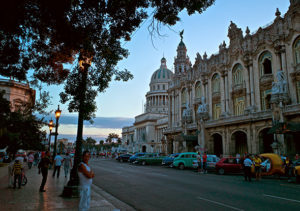
Great Theatre of Havana, located in the Paseo del Prado, its the home of the Cuban National Ballet. It is located in a building known as the Palace of the Galician Centre.
One recent night in Havana, I stared out the window of my friend’s house in the now faded middle-class Vedado neighborhood. A weary 1956 Chevrolet Bel Air wheezed past, trailed by a beaten-up Soviet-era Lada taxi rattling over the potholes. The air smelled sweetly of mimosa and, vaguely, mildew. Wooden window shutters creaked on rusted hinges, brushed by a cooling breeze sweeping in from the sea.
“I want to live here,” I said with a sigh. My friend Mari turned to me. “Why not marry Jessica?” she asked, speaking of her teenage daughter. She didn’t appear to be joking.
Cuba constantly delivers such curve balls. Whenever I’m in Havana, I feel as if I’m living inside either a swoony novel or a Hollywood thriller.
Mari’s shocker sent me in search of a drink. I headed to the nearby Hotel Nacional for a mojito and cigar (like Che Guevara, I prefer Montecristos) at the open-air terrace bar, where a five-piece band spiced things up with hot salsa. The landmark 1930s grande dame is still the preferred hotel
for visiting bigwigs—Lucky Luciano famously called a mobster summit here in 1946, ostensibly to honor an up-and-coming singer named Frank Sinatra.
My favorite nightclub, Gato Tuerto, is down the hill on Calle O. This tiny 1950s supper club has been spruced up for tourist consumption, but patrons are mostly Cubans and local expats, and I still sense that Sinatra and his Rat Pack might saunter in.
Gato Tuerto reflects one of Havana’s unique enchantments: its aura of pre-revolution redux. Throughout the city, retro nightclubs, worse-for-wear Detroit imports, and grimy advertisements for Hotpoint and Singer on weathered facades cause double takes
I recently hailed a colectivo (shared taxi)—every visitor should do so—and jammed in with six Cubans as the circa-1948 Cadillac cruised down Avenida Linea to the rhythm of a rumba on the radio. My destination? El Cocinero, one of Havana’s trendiest paladares (private restaurants).
A spiral staircase corkscrewing up past a redbrick chimney spilled me onto the chic rooftop restaurant. I savored gazpacho, goat-cheese baguette, and garlic octopus tapas alfresco. The city’s young farandula (bohemian in-crowd) chatted over cocktails before streaming downstairs to the adjoining Fábrica de Arte, an avant-garde cultural venue that wouldn’t be out of place in New York City’s Meatpacking District.
Don’t believe anyone who tells you Havana is sclerotic. Or, worse, that the food is boring. Chic clubs and paladares have blossomed since 2011, thanks to Raúl Castro’s economic reforms, bringing heapings of style and good food.
But most Cubans are too hard up to partake of Havana’s new “middle class” spots. The city is best appreciated on their simple terms: the farmers markets, such as at Calles 19 and F, displaying mini-mountains of guavas, marañons, and other tropical fruits; the youth gathered on the seafront Malecón promenade at night, gossiping and flirting over shared bottles of rum; or ice cream enjoyed beneath the dappled shade of jagüey trees drooping their aerial roots to the ground at Parque Coppelia. Everyone stands in line at Coppelia (supposedly the world’s biggest ice creamery).
I love strolling along Vedado’s Calles 17 and 19, lined with beaux arts buildings such as the Museo de Artes Decorativas, lavishly embellished as if the prerevolutionary countess owner were still there; and the mansion at Calles 19 and H that houses UNEAC (National Union of Cuban Writers and Artists). Ground zero for intellectual life in Havana, UNEAC hosts regular peñas—musical and literary gatherings.
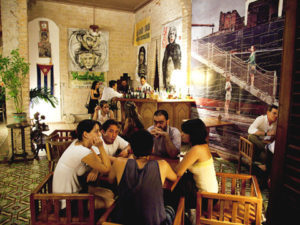
Patrons at Madrigal, the loft-style bar and home of the filmmaker Rafael Rosales, in Havana, Feb. 25, 2012. Paladares, a new group of privately owned restaurants, are bringing a dash of style and enticing food to Havana’s dining scene. (Jose Goitia/The New York Times) – PHOTO MOVED IN ADVANCE AND NOT FOR USE – ONLINE OR IN PRINT – BEFORE MARCH 18, 2012. –
Then there’s the six-lane Malecón boulevard stretching along the Atlantic seashore, linking Vedado to Habana Vieja (Old Havana). It offers a microcosm of Havana life: cigar-sellers, fishers casting off from giant inner tubes, musicians practicing guitars and trumpets. Since I usually have camera in hand, what should be a 30-minute stroll can take me half a day, so many are the distractions.
Habana Vieja preserves one of the great historical cities of the New World. Castles, convents, and palatial mansions dating back centuries still reign majestically over plazas and cobbled streets haunted by the boot steps of conquistadores and, infamously, by Ernest Hemingway’s ghost.
Visiting friends invariably ask me to guide them to Bodeguita del Medio, a graffiti-strewn bar where Hemingway is said to have supped mojitos: The reality is that he rarely drank there. It’s a stone’s throw from Plaza de la Catedral, with its 18th-century baroque cathedral.
Off the plaza’s southwest corner, on Callejón de Chorro, is Taller Experimental de la Gráfica, a graphics cooperative where artists engrave and print one-of-a-kind pieces on antique hand-primed presses. While here, I usually call in at Dulcería Bianchini, a cubbyhole coffee shop where Italian-Swiss owner Katia serves too-good-to-resist croissants, quiches, and tarts, plus frothy cappuccinos.
One of my favorite paladares—Doña Eutimia—adjoins the workshop. This is the place to enjoy down-home creole cooking, such as ropa vieja (braised meat prepared with garlic, tomatoes, and spices) served with hills of white rice and black beans.
A few weeks after Mari’s indecent proposal, I am back in Havana and pay a visit. To my relief Mari tells me that she and her husband, Jorge, have reconsidered having me marry Jessica. Then she throws me another Cuban curve ball: “Jorge and I can divorce and you can marry me.” I smile. With an urban culture as eccentric and enigmatic as this, no wonder I find Havana one of the most engaging cities in the world.
This piece, written by Christopher P. Baker, an expert on our Cuba trips, first appeared in the May 2015 issue of National Geographic Traveler.
CUBA UNCHAINED BY Gerard Dion
NATIONAL GEOGRAPHIC EXPEDITIONS
TRAVEL CUBA
Dion Publishing Proudly presents the following article.
NATIONAL GEOGRAPHIC EXPEDITIONS
Cuba: Discovering Its People and Culture 9-day program designed to experience Cuban culture the most authentic way possible – through its people. –
Immerse Yourself in the Vibrant Culture of Cuba
Immerse yourself in the vivid colors and timeless rhythms of Cuba, experiencing its culture through interactions with a wide spectrum of Cubans. In the company of a National Geographic expert, get acquainted with lively Havana and its residents. Then head south to stroll the colonial streets of seaside Cienfuegos and the UNESCO World Heritage site of Trinidad. Join a National Geographic photographer for trips with a special focus on photography. Or delve into the island’s culture and its natural wonders with a diverse group of experts on an expedition that includes seven nights aboard the Panorama II. On all trips, enjoy meaningful encounters with people from all walks of life: from musicians and entrepreneurs to historic preservationists and students –
Expedition Details
Within cities seemingly frozen in time beats the vibrant pulse of Cuba’s most valuable resource: its people. Connect with Cubans of all backgrounds on this unique program, learning about their everyday lives and examining the forces that have shaped Cuban culture. From the UNESCO World Heritage sites of Old Havana and Trinidad to colonial Cienfuegos, meet historians and scientists, athletes and artists, entrepreneurs and musicians—and experience this fast-changing island nation through their eyes..
Trip Highlights Discuss historic preservation with local experts, and meet residents as you explore Old Havana and Trinidad. Witness Cuba’s shifting cultural and economic landscape on visits to schools, art studios, and privately owned businesses. Soak up rhythms of all sorts—from Afro-Cuban to award-winning acappella. Meet with local dancers and musicians in the colonial city of Cienfuegos.
Itinerary – 9 Days Day 1 — Miami, Florida/Havana, Cuba Depart Miami on a charter flight. Upon arrival in Havana, enjoy a brief driving tour of the city and head to the lively community arts program of Muraleando. Get to know artists, dancers, and musicians who have helped transform a downtrodden neighborhood into a living work of art. Then check in to our hotel before gathering for a welcome reception and dinner tonight. Hotel Parque Central (D)
Day 2 — Havana The architecture of Havana is astounding in its breadth and elegance, yet years of neglect have left many buildings in need of restoration. Learn about the challenges and successes of historic preservation from a local expert, then set out into Old Havana to see centuries-old gems—and meet the Cubans who live and work in them. After lunch, join local youth and their teachers who are carrying on the traditions of Afro-Cuban religion, dance, and music. Delve into race relations and other issues during a meeting and short film screening with Afro-Cuban filmmakers. Attend a special musical performance after dinner.Hotel Parque Central (B,L,D) –
Day 3 — Havana Spend the morning with Cuban professionals, engaging in a specially arranged discussion on education, economics, social issues, the role of government, and other topics of interest. Then join sports journalists at the stadium where the Cuban Baseball Hall of Fame was established and explore the historical and political importance of baseball here. In the afternoon, meet the instructors and students of La Colmenita, an after-school program that uses song and dance performance as a social development tool.Hotel Parque Central (B,L,D)
Day 4 — Cienfuegos Drive south to Cienfuegos, a port city with French colonial roots. Stroll along the main commercial street on a walking tour of the city, stopping to talk to cuentapropistas (self-employed workers) about the burgeoning private economy here. At the prestigious Benny Moré Art School, watch students perform music and dance, view their artwork, and hear the stories of these talented youth and their teachers. After dinner, there will be an opportunity to get to know residents of a typical neighborhood in Cienfuegos.Hotel Jagua (B,L,D) –
Day 5 — Trinidad/Cienfuegos Travel along the Caribbean coast to charming Trinidad, where we explore Cuba’s best preserved colonial city with a restoration expert. Set off along its cobblestoned streets, pausing at colorful houses along the way to meet artisans, antiques collectors, and longtime residents who have transformed their historic homes into guesthouses. One such man is Julio Muñoz, a photographer and union representative for the self-employed, whose family appeared in an October 1999 National Geographic magazine article. At his colonial-era house, learn about his private businesses, such as his bed-and-breakfast, and hear about his program promoting equine care. Hotel Jagua (B,L)
Day 6 — Cienfuegos Near Cienfuegos, explore Cuba’s oldest botanical garden with a botany expert, who will educate us about Cuba’s efforts to maintain the rich biodiversity of its extraordinary plant life. Then stop in a former sugar mill town and meet with the town’s present-day inhabitants. After lunch, focus on sports and their importance in Cuban culture during a discussion with local athletes. Later, enjoy a choral performance and discussion with a world-renowned a cappella group, the Choir of Cienfuegos.Hotel Jagua (B,L,D)
Day 7 — Bay of Pigs/Havana Today, head to the historic Bay of Pigs. Trace the dramatic events that occurred here at a small museum, and then step foot on the Playa Girón, one of two landing sites for the 1961 U.S.–backed invasion. On our way back to Havana, pay a visit to Finca Vigía, the former home of Ernest Hemingway. The director of the museum joins us to share a Cuban perspective on Hemingway’s strong connection to the Cuban people. Hotel Parque Central (B,L)
Day 8 — Havana/Jaimanitas In the fishing village of Jaimanitas, wander through the fantastical workshop and home of ceramic artist José Fuster, called the “Picasso of Cuba.” Stroll down village streets decorated with his mosaics, stopping to interact with neighborhood families along the way. Then attend a question-and-answer session with American author and Havana resident Marc Frank. Meet with Marc and a Cuban journalist to discuss their perspectives on Cuba’s past, present, and future. Celebrate our Cuban experience together at a farewell dinner tonight.Hotel Parque Central (B,L,D) –
Day 9 — Havana/Miami, Florida After breakfast, talk with troupe members of an Afro-Cuban dance group and enjoy an energetic private performance. Later, transfer to the airport for your flight back to Miami. (B,L) –
Meet Our National Geographic Expert
Christopher Baker
The Lowell Thomas Award 2008 ‘Travel Journalist of the Year,’ photographer and writer Christopher Baker is one of the world’s foremost authorities on Costa Rica and Cuba. He has authored guidebooks to Costa Rica, Cuba, Colombia, the Dominican Republic, and Panama in the National Geographic Traveler series. He is also the author of the award-winning Mi Moto Fidel: Motorcycling Through Castro’s Cuba, published by National Geographic Adventure Press. His more than 20 other books include the coffee-table book Cuba Classics: A Celebration of Vintage American Automobiles. He has written for more than 200 publications, from National Geographic Traveler to Newsweek, and has been an invited speaker at National Geographic headquarters, the National Press Club, and the World Affairs Council, among other prestigious organizations. Christopher has been profiled in USA Today and featured on the National Geographic Channel, CNN, Fox News, NPR, and dozens of other radio and TV outlets. He has currently partnered with actor/director David Soul to produce a documentary about the restoration of Ernest Hemingway’s recently rediscovered 1955 Chrysler New Yorker in Cuba. –
Q&A with Christopher Baker
For the first time in years, National Geographic Expeditions began introducing travelers from the U.S. to Cuba in 2011. Prize-winning writer and photographer Christopher Baker, author of National Geographic Traveler: Cuba and one of the world’s leading authorities on Cuban travel and culture, will accompany a number of departures as the Society’s expert. He reflects on the expedition and describes what travelers will experience when they join him.
Q: You helped National Geographic craft the itinerary for our new expeditions to Cuba, and you’ll be traveling along as the expert guide on many of the trips. What excites you about this expedition?
A: I’m particularly thrilled to be working with National Geographic. This expedition is something that I have been excited about ever since I started engaging with the Geographic several years ago. I’ve waited with great anticipation for the day when this would become possible, not least because I love Cuba, I come alive in Cuba, and I’m always thrilled to share what’s unique about Cuba with the people I take there.
There is such pent-up energy among Americans going there. The groups that I’ve been with in Cuba are different in many ways from those I’ve traveled with elsewhere. There is a tremendous desire to understand a place that has been off limits for so long and that remains a mystery for so many.
There are very few people that go to Cuba who don’t return emotionally impacted and with an incredible desire to get back there as soon as possible. There’s a tremendous energy about the place, an enigmatic quality that’s absolutely unique. And that’s what I love to share.
Q: We are offering these trips with what’s called a people-to-people license. Could you explain what that means and give a few examples?
A: The people-to-people license demands that individuals participating with the group connect on a face-to-face level with Cubans while they’re there. This is fantastic, because it gives us an opportunity to learn and understand on a one-to-one basis the intricacies of life for individual Cubans.
We have to remember that we’re going to a communist nation where the social, political, and economic structures differ 180 degrees from those of the USA. U.S. participants in these groups bring their own perspectives about cultural and political norms to a country that operates on a very different plane. For example, we know that in this communist nation, self-employment and employing people have pretty much been banned for five decades under Fidel and now Raul Castro. New openings under Raul are allowing a greater number of previously limited categories of self-employed people to make their own livelihoods. We are arriving at a particularly interesting point, because Cuba is beginning to open up.
In terms of Cuba’s recent history, we’re seeing some remarkable changes, most recently an announcement that people will be able to buy and sell real estate. That’s been banned for five decades. We’ll be able to engage with people and learn how it’s been possible to live in a society where, to use a U.S. dollar equivalent, the average monthly salary of a Cuban is $18. How do you get by in a country where people have traditionally relied on rations provided by the government, and now they’re cutting those out, talking about deleting them entirely?
We’ll be meeting with people such as my friend Julio Muñoz in Trinidad. Julio comes from a well-noted and wealthy family that lost much of their property after the revolution. He lives in a wonderful 18th-century house that’s been featured in National Geographic magazine. He currently makes his living by letting out rooms.
Until last year, it was illegal for Cubans to operate two businesses, so he could never be a licensed guide, for example, while he was renting out his rooms.
One of the changes Raul introduced allows Cuban entrepreneurs to operate multiple businesses. So last year, Julio – who’s always had a horse living at the back of the house in a stable that’s built into the courtyard, and who’s a horse lover – got together with other Cuban horse owners and now offers tours on horseback. And he also offers an equine health program to educate Cubans on how to care for their horses.
We’ll get together with Julio. We’ll go to his home. We’ll learn face-to-face from him and his wife, Rosa, what it means to be able to rent out rooms and engage with travelers on a daily basis. We’ll meet interesting characters such as a Santería priest. And we’ll also learn something about how Julio is engaging fellow Cubans regarding equine care.
Q: Do you get a sense of walking back in time, back into the middle of the 20th century, when you travel through Cuba?
A: Even further than that. It’s one of the great qualities of traveling to Cuba – you’re stepping into a time warp, and not just a time warp. Because of some of the parameters of life in Cuba, I often say that it’s like stepping into C.S. Lewis’s Narnia, or if you’re a fan of Alice in Wonderland, then going down the rabbit hole. It’s a place full of eccentricity, eroticism, and great enigma.
A Hollywood-stage-set quality is a paramount part of the time warp. It hits immediately when you arrive at the airport. You step outside the doors, and there’s a whole stream of 1950s and older American cars. Of course, Cuba has modern taxis for tourists, French Peugeots and modern Japanese models. But just behind them you’ll see a stream of taxis waiting for the Cubans who don’t have the dollars to ride in modern cars, and what are they? They’re old Chevrolets, Oldsmobiles, and (primarily) Cadillacs. Havana had more Cadillacs per capita than anywhere else in the world, including the USA, and many of them are still running. So you walk out the doors of the airport and you go “Wow!”
Many of us are familiar with the number of 1950s vehicles still chugging down the road in Cuba, but you don’t have to get far to understand that you’re stepping back in time in another perspective. Sure, we’ll be going through Old Havana, which was founded in the 16th century and is one of the most remarkable enclaves of colonial architecture in the new world. But when we leave Havana and head out to Viñales, we’re stepping into another world, a rural environment where the ox-drawn plow and ox carts trundling down the road are still the norm. These villages that we pass through and the larger towns take us back two or three hundred years.
We’ll also go to Trinidad. The city of Trinidad is a UNESCO World Heritage Site in its entirety. It was a thriving city during the great sugar boom of the 18th and 19th centuries, but in the late 19th century it was passed by for various reasons. Today, it’s ‘pickled in aspic.’ Trinidad was featured in a 1999 story in National Geographic magazine. David Harvey photographed a wonderful piece that profiles this unique town. –
It’s a town where there are still cobbles in the streets, no cars except those owned by locals allowed within its inner perimeter. It’s a lived-in museum where no modern houses have been erected within the city core, which has been restored for the most part. So we’ll be traveling back to the 18th century as we visit Trinidad and visit my friend Julio and other individuals, getting to know what it’s like for the Cubans living in a city that’s changed very little in hundreds of years.
Q: Is there anything else you’d like to share about this expedition?
A: Yes. It’s important for people who go to Cuba to understand that they’re going to be moved emotionally, and in two ways. We’re only 90 miles from the shores of Florida, but we’re traveling to a place that during five decades of communism has been set back economically. So you’re going to be moved by the relative poverty of Cuba. But you’re also going to be moved in a very positive and passionate way by the spirit of community that the average Cuban displays.
Cuba has been a communist nation for more than 50 years, and while we as Americans – speaking as an English guy who’s now a U.S. citizen – focus on the negatives of communism, there are positives also. The community spirit, the real sense of what community means, and the import it has for people living in a communist society is not something that’s readily understood by Americans. It’s a very positive quality – and that’s true whatever you think about the human rights issues, whatever you think about the economic disaster that communism is. You bring away some tremendous positives (and this is a great benefit of people-to-people) when you actually meet Cubans and talk to them.
Interview by Ford Cochran –
Christopher will join the following departures:
Feb 12 – 20, 2017
Mar 12 – 20, 2017
Mar 26 – Apr 03, 2017
May 07 – 15, 2017
May 21 – 29, 2017
Jun 04 – 12, 2017
Jun 18 – 26, 2017
Expedition Cost
April – June 2016 $5,995
November – December 11, 2016 $6,295
December 15, 2016 –
March 2017 $7,595 April –
June 2017 $6,995
Prices are per person, double occupancy. For a single room, add $800 in 2016 and $1,000 in 2017. There is an additional holiday surcharge of $400 per person on the December 15,
2016 and December 29, 2016 departures. Airfare is not included in the expedition cost. Round-trip charter airfare between Miami and Havana is $550 per person. A $75 per person airfare supplement applies for the December 15, 2016 and December 29, 2016 departures. –
What To Expect
This trip is permitted through the people-to-people general license category authorized by the Department of the Treasury’s Office of Foreign Assets Control. The itinerary was designed to provide an in-depth cultural experience with numerous opportunities for meaningful interactions with Cubans. Travel restrictions in Cuba, such as limits on how much one may spend and what may be purchased, will be provided in your pre-departure materials. While we do our best to adhere to the itinerary listed here, traveling in Cuba requires flexibility, and changes to hotels and activities may occur. –
CUBA UNCHAINED BY Gerard Dion
http://www.cubaunchained.com/home.html
NatGeo Travels: Cuba By Lindsay N. Smith
TRAVEL CUBA
Dion Publishing Proudly presents the following article.
We asked a National Geographic staff member about her recent travels to Cuba. Here’s her advice on getting the most out of a trip to the island nation.
NatGeo Travels: Cuba By Lindsay N. Smith
Boys play soccer in the street on an afternoon in Old Havana, Cuba.
Photograph by Molly Danner
Molly Danner, a program director on National Geographic’s Expeditions team, recently visited Cuba on two National Geographic tours, both focused on discovering the island’s culture. This was her third trip to the once forbidden nation, where National Geographic has been offering authorized tours since the early 2000s.
For Molly, this most recent trip was all about the amazing people she met in Cuba. Here’s what she had to say about how these connections made her travels more memorable and meaningful.
Why did you choose this particular trip or destination?
Like many others, I’ve been captivated by the layers of the Cuban story, from historical events to the evolving landscape today. Beyond spending a period of time living or studying abroad, rarely have I had a chance to explore a culture so pointedly through its people.
People-to-people travel programs are organized with full days to focus on meaningful encounters with Cubans from all walks of life—more structured than some trips I’ve taken, but it’s also a great way to get to know a country at its core. There’s something to be said for seeing a culture in such an authentic way—through the stories, hearts, and lives of its people—and having the opportunity to be connected with locals, ask questions, and discuss similarities and differences.
Describe your most memorable moment.
A fellow traveler leaned in and said with a grin, “You got the best dance partner.” I was engaging with community members at a neighborhood party in the French colonial city of Cienfuegos coordinated for our group to share ideas, stories, and interests related to our lives. A band played “Guantanamera” and other classic Cuban and rumba songs. But then a couple of young Cubans organically jumped in with a guitar and drum to sing Enrique Iglesias’s more recent hit, “Me Estoy Enamorando.” It’s nearly impossible to sit still when you hear Cuban rhythms around you and a new friend pulls you into a dance.
What’s a can’t-miss spot in this location?
An early morning visit to the vantage point of El Morro Castle, which offers a view of Havana and the harbor as the city is waking up.
Classic cars, horse-drawn carriages, and bicitaxis line the streets near Havana’s Central Park.
Photograph by Molly Danner
Two men slice and cook calabaza, a pumpkin-like squash, at the Mercado Agropecuario Egido, a street market in Old Havana.
Photograph by Molly Danner
Tell us about someone on your trip who made it particularly special.
Whether it was hearing about baseball’s impact on his life and country from a former professional player; learning about the expanding private sector from a casa particular (guesthouse) owner; or seeing how music, dance, and the arts are cultivated at an arts academy, the people I met made each day a discovery.
I found the Cuban people to be inspiringly creative and resourceful, warm and welcoming, vibrant and enthusiastic.
The deep sense of community is tangibly seen and felt, especially as neighbors often sit on their front stoops and, more often than not, would welcome us into their homes. Ophelia, a woman I met in a small town outside Havana, left a lasting impression on me. In her 90s, she was eager to say hello, show us her home, and share photos of her as a young woman, clutching them with pride and a sense of nostalgia.
Cubans frequently gather to play dominoes, which is well loved throughout the country. These fishermen enjoy a game near the village of Cojímar, Cuba.
Photograph by Molly Danner
Give us the most important tip you have for any new visitors.
Approach your trip to Cuba with openness and an adventurous spirit. I love finding universal connections when traveling. This often shows up as a shared interest or a familiar expression of humanity—something that transcends any language barrier. Having played soccer from a young age, I found that the universality of the sport of fútbol (and, for many travelers, baseball as well) was a way to bring me closer to the locals, so I could start up conversations or juggle the soccer ball with children playing a pickup game in the street. Don’t be afraid to highlight and celebrate these shared interests as a way to connect. It makes for deeper impressions.
Catch up with Molly Danner on Instagram @dannermo.
Cuba to legalize small and medium-sized private businesses
Dion Publishing Proudly presents the following article.
Cuba to legalize small and medium-sized private businesses
By MICHAEL WEISSENSTEIN May. 24, 2016 11:47 AM EDT
HAVANA (AP) — Cuba announced Tuesday that it will legalize small- and medium-sized private businesses in a move that could significantly expand private enterprise in one of the world’s last communist countries.
Cuban business owners and economic experts said they were hopeful the reform would allow private firms to import wholesale supplies and export products to other countries for the first time, removing a major obstacle to private business growth.
“This is a tremendously important step,” said Alfonso Valentin Larrea Barroso, director-general of Scenius, a cooperatively run economic consulting firm in Havana. “They’re creating, legally speaking, the non-state sector of the economy. They’re making that sector official.”
While the government offered no immediate further details, the new business categories appear to be the next stage in reforms initiated by President Raul Castro after he took over from his brother Fidel Castro in 2008. While those reforms have allowed about half a million Cubans to start work in the private sector, the process has been slow and marked by periodic reversals.
The government has regularly cracked down on private businesses that flourish and compete with Cuba’s chronically inefficient state monopolies. The latest backlash came after President Barack Obama met private business owners during his March 20-22 visit to Cuba, prompting hard-line communists to warn that the U.S. wants to turn entrepreneurs into a tool to overturn the island’s socialist revolution.
The Communist Party documents, published in a special tabloid sold at state newsstands Tuesday, said a category of small, mid-sized and “micro” private business was being added to a master plan for social and economic development approved by last month’s Cuban Communist Party Congress. The twice-a-decade meeting sets the direction for the single-party state for the coming five years.
The 32-page party document published Tuesday is the first comprehensive accounting of the decisions taken by the party congress, which was closed to the public and international press. State media reported few details of the debate or decisions taken at the meeting but featured harsh rhetoric from leading officials about the continuing threat from U.S. imperialism and the dangers of international capitalism.
That tough talk, it now appears, was accompanied by what could be a major step in Cuba’s ongoing reform of its centrally planned economy.
“Private property in certain means of production contributes to employment, economic efficiency and well-being, in a context in which socialist property relationships predominate,” reads one section of the “Conceptualization of the Cuban Economic and Social Model of Socialist Development.”
Vanessa Arocha, a 56-year-old architect who makes hand-made purses and bags at home under a self-employed worker’s license, said she dreamed of forming a legally recognized small business that could import supplies and machinery and hire neighbors looking for extra income.
“I could import fittings, zippers, vinyl,” she said. “Being a small business would be a new experience, one we know little about, but something very positive.”
The government currently allows private enterprise by self-employed workers in several hundred job categories ranging from restaurant owner to hairdresser. Many of those workers have become de-facto small business owners employing other Cubans in enterprises providing vital stimulus to Cuba’s stagnant centrally planned economy.
The Cuban government blames the half-century-old U.S. trade embargo on Cuba for strangling the island’s economy. Cuba’s new class of entrepreneurs say the embargo is a major obstacle but also lodges frequent, bitter complaints about the difficulties of running a business in a system that does not officially recognize them.
Low-level officials often engage in crackdowns on successful businesses for supposed violations of the arcane rules on self-employment. And the government maintains a monopoly on imports and export that funnels badly needed products exclusively to state-run enterprises.
Due to its dilapidated state-run economy, Cuba imports most of what it consumes, from rice to air conditioners. Most private businesses are forced to buy scarce supplies from state retail stores or on the black market, increasing the scarcity of basic goods and driving up prices for ordinary Cubans. Many entrepreneurs pay networks of “mules” to import goods in checked airline baggage, adding huge costs and delays.
The latest change will almost certainly take months to become law. Such reforms typically require formal approval by Cuba’s National Assembly, which meets only twice a year.
Michael Weissenstein on Twitter: https://twitter.com/mweissenstein
CUBA UNCHAINED BY Gerard Dion
http://www.cubaunchained.com/home.html

